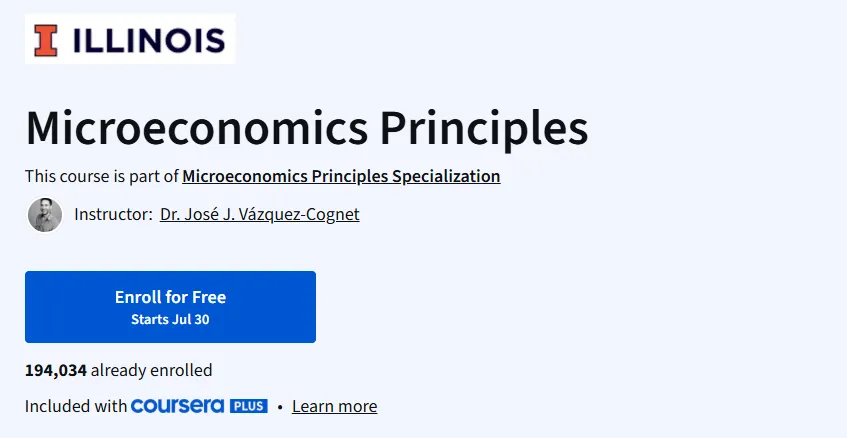What will you learn in Microeconomics Principles Course
Understand core microeconomic concepts including supply and demand, market equilibrium, and elasticity.
Analyze consumer and producer behavior in competitive and non-competitive markets.
Evaluate economic outcomes using efficiency and equity metrics.
Apply microeconomic thinking to real-world issues like taxation, price controls, and welfare analysis.
Program Overview
Module 1: Introduction and Supply & Demand
⏱️ 1 week
Topics: Scarcity, opportunity cost, market systems, demand and supply curves.
Hands-on: Demand-supply simulations and market shifts analysis.
Module 2: Elasticity
⏱️ 1 week
Topics: Price elasticity of demand/supply, income elasticity, cross-price elasticity.
Hands-on: Calculations and interpretation of elasticity for different products.
Module 3: Market Efficiency and Government Intervention
⏱️ 1 week
Topics: Consumer and producer surplus, deadweight loss, taxation, price floors/ceilings.
Hands-on: Analyze tax impacts with interactive graphs.
Module 4: Production, Costs, and Profit Maximization
⏱️ 1 week
Topics: Short-run and long-run costs, marginal analysis, profit maximization.
Hands-on: Case studies on business production decisions.
Module 5: Market Structures
⏱️ 1 week
Topics: Perfect competition, monopoly, oligopoly, monopolistic competition.
Hands-on: Game theory basics and market comparison tables.
Module 6: Externalities and Public Goods
⏱️ 1 week
Topics: Positive and negative externalities, public goods, government solutions.
Hands-on: Environmental economics examples and policy evaluation.
Get certificate
Job Outlook
Strong microeconomic understanding is essential for roles in consulting, government, business strategy, and finance.
A good foundation for advanced economics or business degrees.
Microeconomics is highly relevant in data-driven decision-making and market analysis careers.
Specification: Microeconomics Principles
|
FAQs
- No prior economics or advanced math required.
- Covers foundational principles of supply, demand, and market behavior.
- Suitable for students, professionals, and curious learners.
- Emphasizes practical examples over mathematical modeling.
- Hands-on exercises help learners apply concepts to real-world scenarios.
- Understand supply and demand interactions.
- Explore price elasticity, income elasticity, and cross-price effects.
- Analyze market efficiency and consumer-producer surplus.
- Study impacts of taxation, price controls, and regulation.
- Hands-on simulations to observe market responses.
- Learn characteristics of perfect competition, monopoly, oligopoly, and monopolistic competition.
- Understand profit maximization strategies.
- Explore game theory basics applied to markets.
- Case studies of business decision-making.
- Compare efficiency and equity across market structures.
- Prepares for roles in consulting, finance, government, and strategy.
- Strengthens analytical thinking for market analysis and decision-making.
- Useful foundation for advanced economics or business degrees.
- Enhances ability to interpret real-world economic outcomes.
- Certificate validates understanding of essential microeconomic principles.
- 6 modules: Supply & Demand, Elasticity, Market Efficiency & Government Intervention, Production & Costs, Market Structures, Externalities & Public Goods.
- Each module: ~1 week at a moderate pace.
- Self-paced with lifetime access.
- Includes interactive exercises and simulations.
- Total duration: ~6 weeks.





